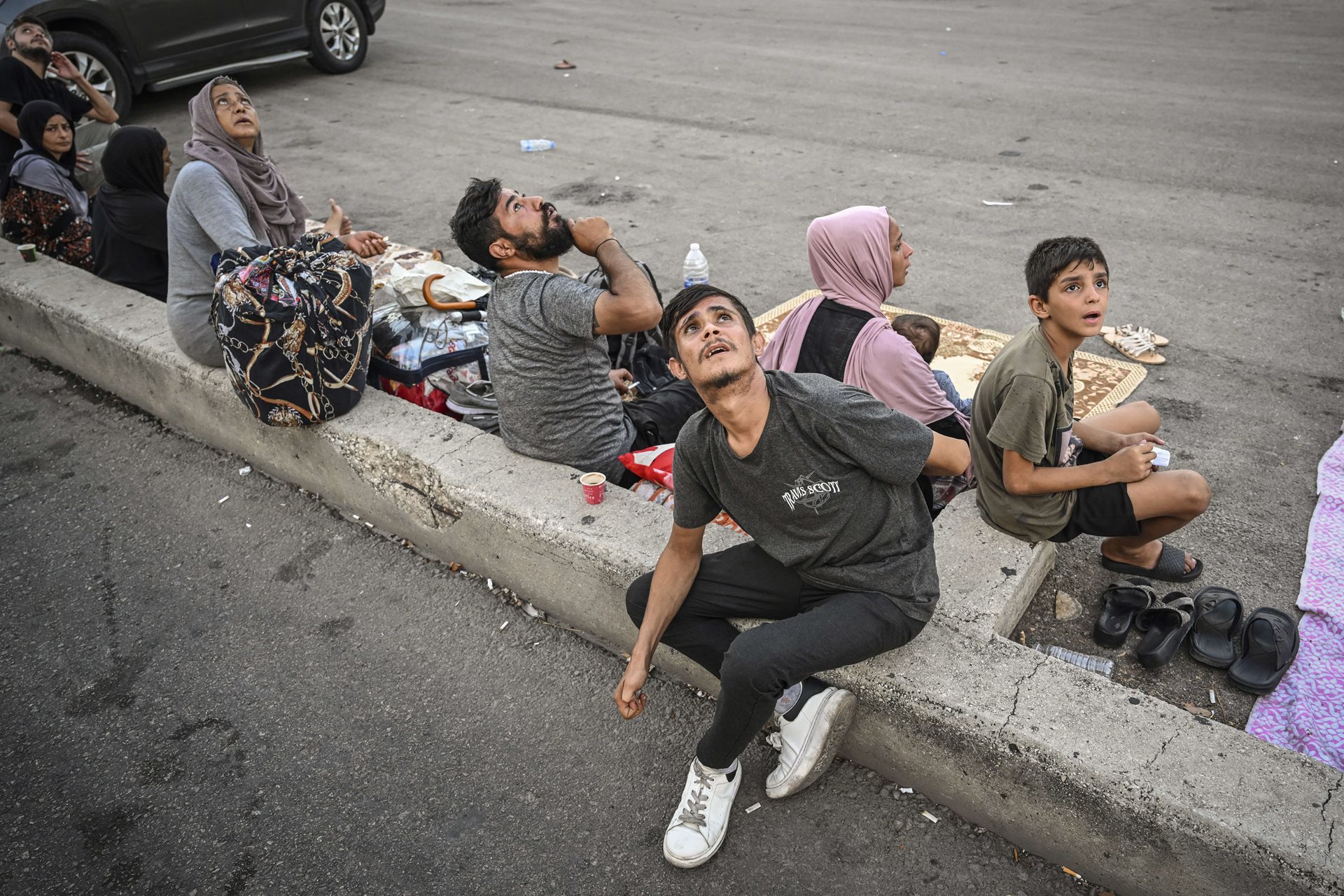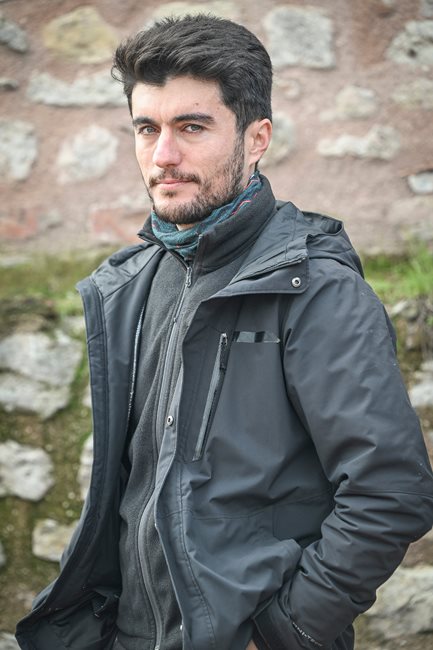People glance anxiously upwards during an Israeli drone strike, as they take refuge away from buildings in Beirut's Dahiyeh neighborhood, Lebanon. Jets and drones often fly at low altitudes, causing fear and distress.
Cross-border attacks between Israel and Lebanon-based Hezbollah – ongoing since the outbreak of the war in Gaza – escalated sharply in September 2024. Until then, hostilities, mainly in the form of cross-border missile fire, were confined to the south of Lebanon and north of Israel.
On 23 September, Israel launched Operation Northern Arrows – a large-scale military operation targeting Hezbollah across all of Lebanon. Beirut, initially a refuge for tens of thousands of people fleeing airstrikes in the south, itself came under fire as attacks spread northwards.
Already on 20 September, Israel had launched an air attack that leveled a residential building in the suburb of Dahiyeh in southern Beirut, stating the target was a senior Hezbollah official, Ibrahim Aqil. Then, from 27 September (two days before this photograph was taken), Israel targeted buildings, including apartment blocks, in Dahiyeh, saying that Hezbollah were headquartered in the densely populated suburb, and assassinating Hezbollah leader Hassan Nasrallah.
Israel generally gave evacuation orders before attacks on residential areas. However, Amnesty and Action Aid argue that such orders were inadequate, and sometimes misleading, vague, or too general, at times encompassing entire neighborhoods. Warnings to move 500 meters away from some identified buildings were sent just 15 to 45 minutes before the September strikes on the Dahiyeh neighborhood. This caused widespread panic among residents and triggered a wave of displacement as people fled the area. All in all, the Lebanese government estimates that around 1.9 million people have been displaced in Lebanon, of which 624,000 have fled to Syria.
Israel and Hezbollah agreed a ceasefire which went into force on 27 November 2024, but was already being violated by Israeli airstrikes in southern Lebanon and Beirut early in 2025.
Are you a photographer and/or passionate about press freedom? Sign up for our newsletter to stay updated on our annual contest and to hear about exhibitions near you.

